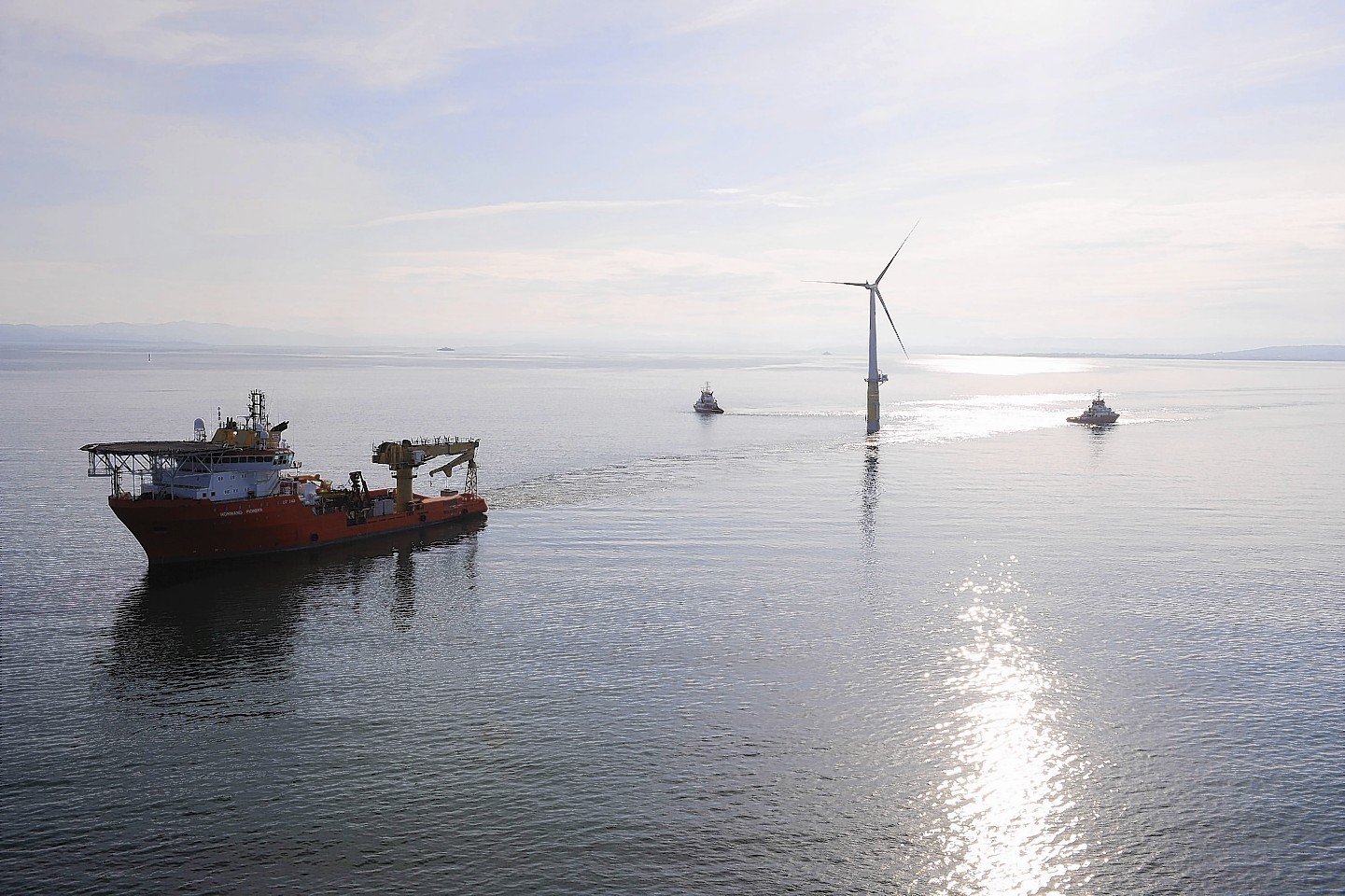A Norwegian energy giant which wants to build the world’s first floating windfarm off the north-east coast has applied for an exclusion zone around the development site.
Statoil is spearheading the multimillion-pound Hywind pilot project and wants to site five 600ft turbines 13 nautical miles off Peterhead.
A 550-yard safety exclusion zone will be needed around each structure during the five-month installation period.
After that, a 50-yard no-go area for shipping will be maintained.
Rather than being embedded in the sea floor, each of the 1,000-tonne turbines would be tethered and allowed to float.
Their design means they can be situated in water deeper than any turbine before them, largely out of sight of coastal residents.
Last night, Statoil spokeswoman Ola Anders Skauby said: “We have applied for safety zones for both the construction phase and the operations phase in accordance with applicable regulations.
“The 550 yards during the construction phase is standard for offshore wind projects.
“The Hywind concept with floating windmills has a mooring system that stretches out some distance from the windmill itself.
“As this concept represent new and unknown technology to most travellers in these waters, a 50-metre zone is regarded as a safety barrier for both travellers and for the windmills.”
She added that a final investment decision was likely to be made in the autumn.
The groundbreaking technology has already met with approval in the north-east and if it is proven to work could be used at deep water sites around the world.
However, a leading fishermen said last night that the local fleet must be considered.
Jimmy Buchan said:
“If people are being displaced they must be compensated, or if there’s opportunities for people to diversify while these things are built that should also be considered.
“I don’t have a problem with these big companies coming in if they look after the communities they’re going to have an effect on. This can be looked on favourably.”
The Hywind pilot programme could be built in 2017 and remain in place for 20 years.
